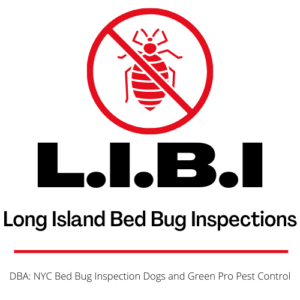With the growing number of bed bug infestations across the country people are becoming much more interested in the behavior of these blood-sucking little parasites. How do they reproduce? What are their feeding habits? Where in the world are they coming from?
One question we hear a lot is “Can bed bugs live outside and if so can we prevent them from coming into our homes?” It’s a good question. We naturally think of bed bugs as household pests, because that’s where we interact with them the most. But when we learn more about bed bugs, and how they cope with different environments, we are better able to eliminate them in our homes and offices.
Why Are Bed Bugs Usually Found Indoors?
The reason bed bugs are primarily found indoors is fairly simple – that’s where their food source can be found. Over the ages bed bugs have evolved to feed almost exclusively on the blood of human beings. That adaptation demands that bed bugs live in close proximity to their hosts. Consequently, bed bugs have adapted to live where their primary food source can be found.
Basically, bed bugs are predominately found indoors because humans spend most of their time indoors. Bed bugs are not much for traveling or hunting. They move slowly and can neither jump or fly, so their ability to track down new sources of nourishment are limited. Ultimately, if they are to survive, they must remain close to their host animals (i.e. Us)
Do Bed Bugs Ever Choose to Live Outside?
Bed bugs have been around for as long as humans themselves, and their transition to a predominately indoor parasite parallels that of man. Naturally, in the dim recesses of time bed bugs, like their human hosts, lived in the wild. However, as humans began to develop into a more sedentary creature (building homes and stable communities) bed bugs evolved to live inside with their human hosts.
Today, bed bugs are almost exclusively indoor pests. They have evolved to prefer warm and dark hiding places such as cushions, cracks and crevices, cozy carpeting and, yes, mattresses. There they will lie in wait until the time is right to feed on their human hosts.
Of course, there are similar hiding places outdoors so it might seem reasonable that there would also be a population of bed bugs living au natural as it were. But bed bugs go where their hosts go. You might find bed bugs in campers’ bedding or hiding in fishing cabins or hunters blinds but that’s only because they have travelled their on the coat tails of their food source.
So If We Force the Bed Bugs Outside They’ll Die, Right?
Unfortunately, that isn’t the case at all. While bed bugs may prefer to live inside with their hosts they don’t particularly suffer when banished to the outside world. Bed bugs are fairly resilient pests, and they can survive for several months without a blood meal. That gives a banished bed bug plenty of time to find a new host and hitch a ride on their clothes or belongings back to the safety of an indoor and food-rich environment.
This accounts for many of the common mistakes people make when treating their homes or offices for bed bugs. A successful bed bug treatment may kill the bulk of the colony, forcing any stragglers and survivors out of the building. But when the treatment is over, and normal human traffic resumes, those banished bed bugs have ample opportunity to hitch a ride back into their preferred environment and the cycle begins anew.
Professional Treatment with Follow-Up is the Key
That’s why it’s so important to rely on a professional bed bug removal service when trying to deal successfully with a full-scale bed bug infestation. Professional bed bug inspection and removal services understand the importance of a concerted follow-up to all forms of removal services, including heat and pesticide based treatments.
Without the proper follow through there is always a good chance that any bed bugs force out of the building will simply re-enter when the treatment is completed. Bed bugs can survive outside with little trouble, whether cold temperatures and lack of food for several months. They can outwait the treatment, only to return when they feel it’s safe to do so.
Any bed bug treatment needs a comprehensive follow-up inspection to ensure that the infestation has truly been eliminated. Only then can you sleep soundly once again, assured that your home is free from these blood-sucking parasites.
Published by Scott Palatnik
If you believe you’ve brought bed bugs into your home or office, give us a call, we can help!
Now with 2 locations. On Long Island @ 516-619-6149, or in NYC @ 212-299-9186
We are Long Island Bedbug Inspections.
Your Bedbug Inspection, and Elimination solution.


